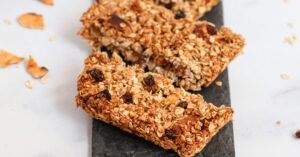
In our busy lives, finding time for effective exercise can be challenging — but strength training doesn’t have to take hours to deliver results. This 25-minute dumbbell workout is designed to strengthen your entire body, boost metabolism, improve insulin sensitivity, support hormone balance, and enhance longevity — all in less than half an hour.
Workout Overview
Format: 3 Rounds
Structure: Perform 10–12 reps of each exercise (per side where applicable)
Rest: 30–45 seconds between moves
Equipment: A pair of dumbbells and optional bench
Time: ~25 minutes total
Each round includes 6 compound moves that target every major muscle group while engaging your core and stabilizers.
The Circuit (6 Moves)
1. Goblet Squat (Lower Body)
How to do it:
- Hold one dumbbell vertically at your chest, elbows tucked in.
- Stand with feet shoulder-width apart.
- Lower your hips back and down as if sitting into a chair, keeping your chest lifted and heels grounded.
- Press through your heels to return to standing.
Benefits:
- Builds strength in the quads, glutes, and hamstrings.
- Enhances joint stability and mobility in the hips and knees.
- Supports metabolic and hormonal health by stimulating large muscle groups.

2. Dumbbell Bench Press (Chest & Triceps)
(Can be performed on a bench or floor)
How to do it:
- Lie flat on your back, holding a dumbbell in each hand at chest level, palms facing forward.
- Press the weights upward until arms are fully extended, then slowly lower them back down.
Benefits:
- Strengthens the chest, shoulders, and triceps.
- Improves upper body stability and posture.
- Supports bone density and upper-body muscle tone.

3. Dumbbell Bent-Over Rows (Back & Posture)
How to do it:
- Hold dumbbells at your sides with a neutral grip (palms facing each other).
- Hinge forward at the hips, keeping your back straight and core tight.
- Pull the weights toward your ribcage, squeezing your shoulder blades together.
- Slowly lower back down.
Benefits:
- Builds a strong back and improves posture.
- Balances out “push” movements like bench press.
- Enhances core and spinal stability.

4. Dumbbell Romanian Deadlift (Hamstrings & Glutes)
How to do it:
- Hold dumbbells in front of your thighs.
- With a soft bend in your knees, hinge at your hips, lowering the weights toward mid-shin.
- Keep your spine neutral and chest open.
- Engage your glutes and hamstrings to return to standing.
Benefits:
- Strengthens posterior chain muscles — hamstrings, glutes, and lower back.
- Improves hip mobility and reduces risk of lower back injury.
- Boosts metabolism and supports lean muscle maintenance.

5. Overhead Shoulder Press (Shoulders & Core)
How to do it:
- Stand tall with dumbbells at shoulder height, palms facing forward.
- Engage your core and press weights overhead until arms are fully extended.
- Lower them slowly back to starting position.
Benefits:
- Builds upper body and shoulder strength.
- Improves posture and overhead mobility.
- Engages the core for stability, supporting functional movement patterns.

Russian Twist with Dumbbell (Core & Obliques)
How to do it:
- Sit on the floor, knees bent, holding one dumbbell with both hands.
- Lean back slightly and lift your feet (optional for extra challenge).
- Rotate your torso from side to side, tapping the dumbbell near each hip.
Benefits:
- Strengthens obliques and entire core.
- Improves rotational control and spinal stability.
- Enhances balance and functional movement.

How It Works: The Functional Medicine Perspective
This short yet powerful routine offers more than just aesthetic benefits:
- Hormonal Health: Strength training supports testosterone, growth hormone, and insulin sensitivity — key for energy and metabolic health.
- Blood Sugar Regulation: Muscles act as glucose sponges, improving insulin response and reducing risk for metabolic dysfunction.
- Bone Density & Longevity: Load-bearing exercise signals the body to maintain strong bones and connective tissue.
- Mood & Cognitive Function: Resistance training boosts endorphins and brain-derived neurotrophic factor (BDNF), enhancing mental clarity and resilience.
- Inflammation Control: Regular strength work can lower systemic inflammation and improve mitochondrial function.
Putting It All Together
Aim for 2–3 sessions per week. You can increase intensity by:
- Using heavier weights
- Shortening rest periods
- Adding an extra round when time allows
In just 25 minutes, you can create a powerful metabolic and musculoskeletal stimulus that supports long-term health and vitality.







